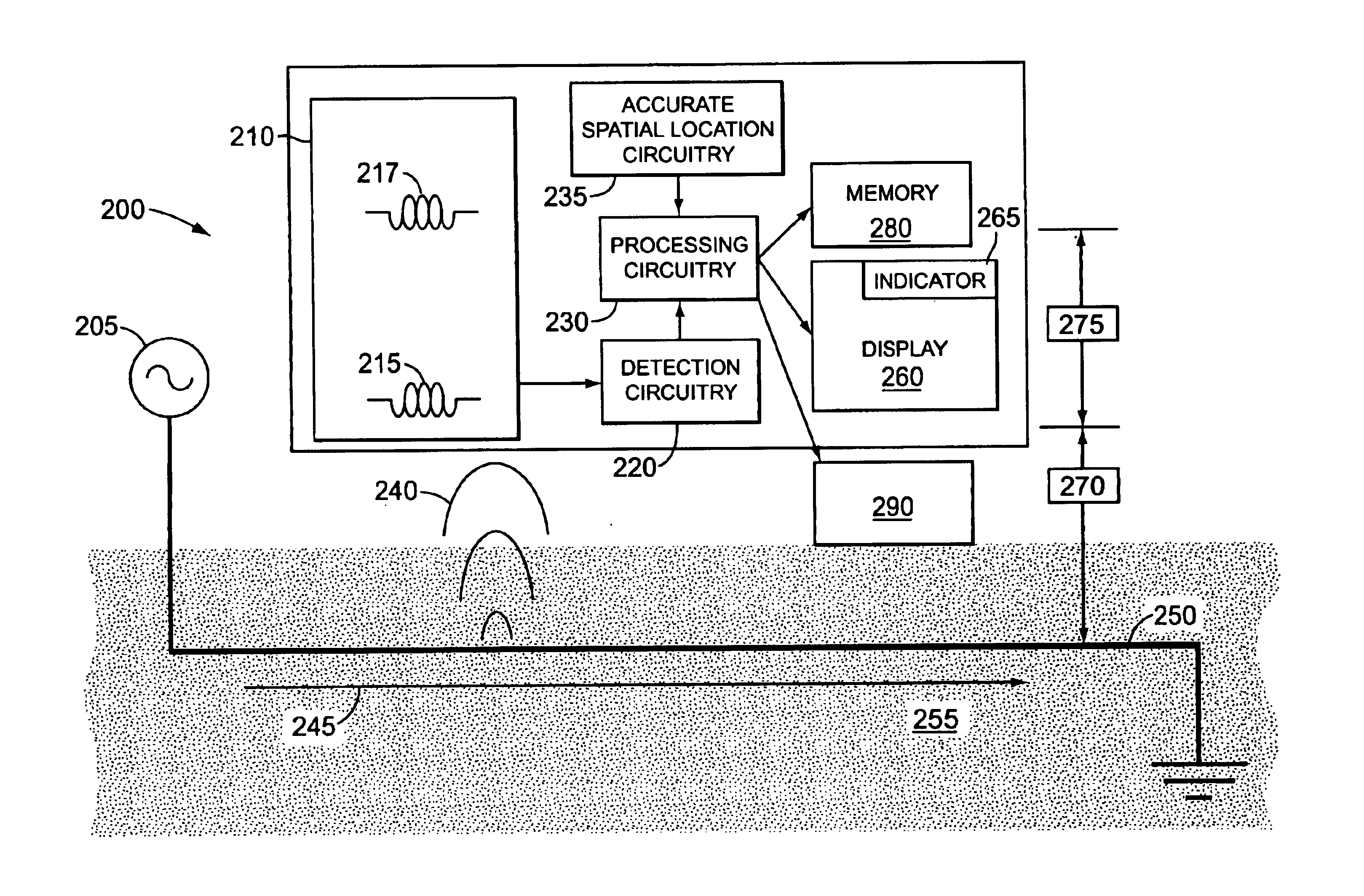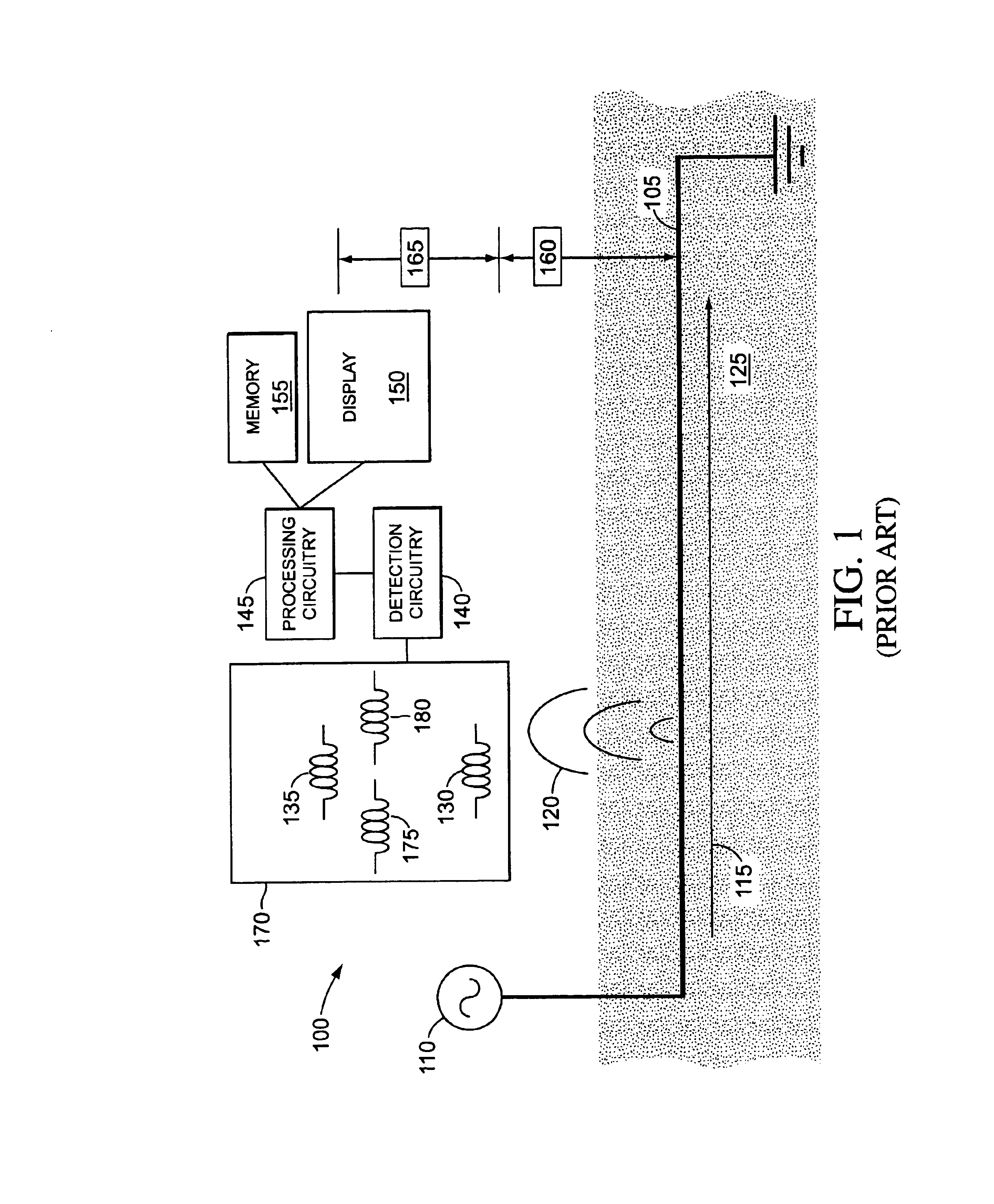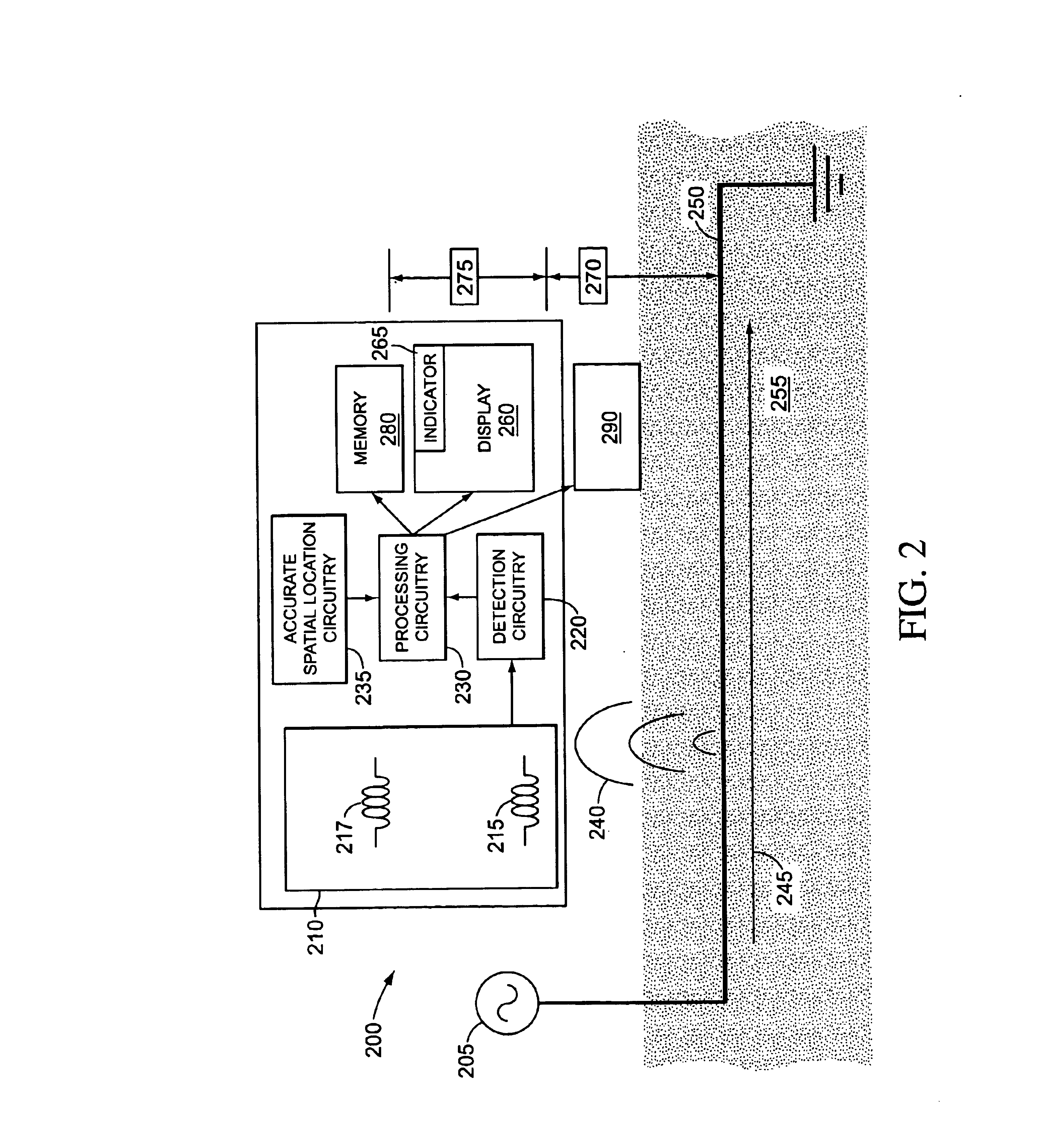Buried line locator with integral position sensing
a technology of position sensing and locators, applied in the field of electronic devices, can solve the problems of damage to the line, serious injury to a person excavating near the line, and incorrect determination of the location of the lin
- Summary
- Abstract
- Description
- Claims
- Application Information
AI Technical Summary
Benefits of technology
Problems solved by technology
Method used
Image
Examples
Embodiment Construction
[0028]FIG. 1 shows a schematic diagram of a conventional line locator system 100 positioned above a line 105. Transmitter 110 can be coupled to line 105 in order to induce current 115 to flow through line 105. As current 115 flows through line 105, it generates electromagnetic field 120 that is radiated from line 105. If current 115 is constant, electromagnetic field 120 is a static electromagnetic field. If current 115 is time varying, electromagnetic field 120 is also a time-varying electromagnetic field. A portion of the electromagnetic field 120 penetrates ground 125, where it can be detected by receiver 170 of line locator 100. In the embodiment of locator 100 shown in FIG. 1, receiver 170 includes detectors 130, 135, 175 and 180, which can be positioned to determine both the depth of line 105 and the lateral position of line 105.
[0029]Transmitter 110 is shown in a direct connection mode, i.e. transmitter 110 is electrically coupled to line 105. The electrical connection can, f...
PUM
 Login to View More
Login to View More Abstract
Description
Claims
Application Information
 Login to View More
Login to View More - R&D
- Intellectual Property
- Life Sciences
- Materials
- Tech Scout
- Unparalleled Data Quality
- Higher Quality Content
- 60% Fewer Hallucinations
Browse by: Latest US Patents, China's latest patents, Technical Efficacy Thesaurus, Application Domain, Technology Topic, Popular Technical Reports.
© 2025 PatSnap. All rights reserved.Legal|Privacy policy|Modern Slavery Act Transparency Statement|Sitemap|About US| Contact US: help@patsnap.com



